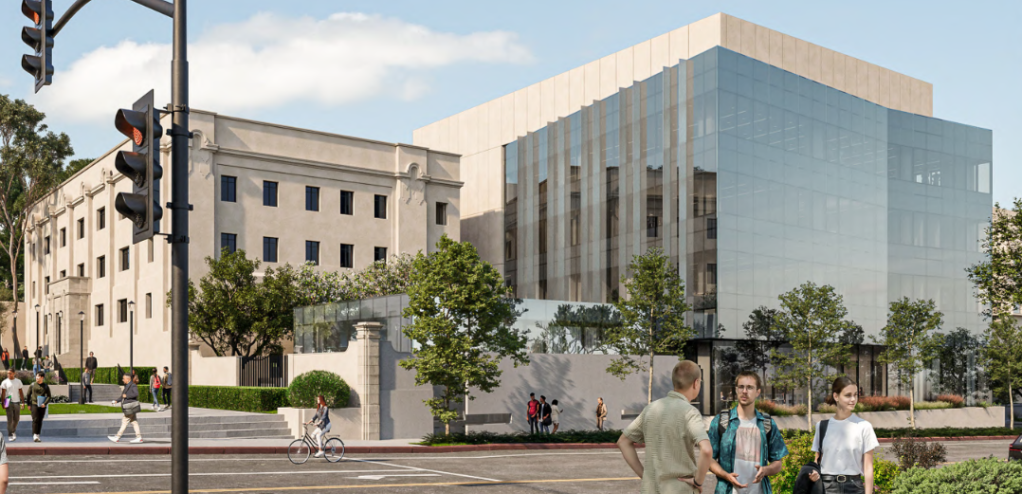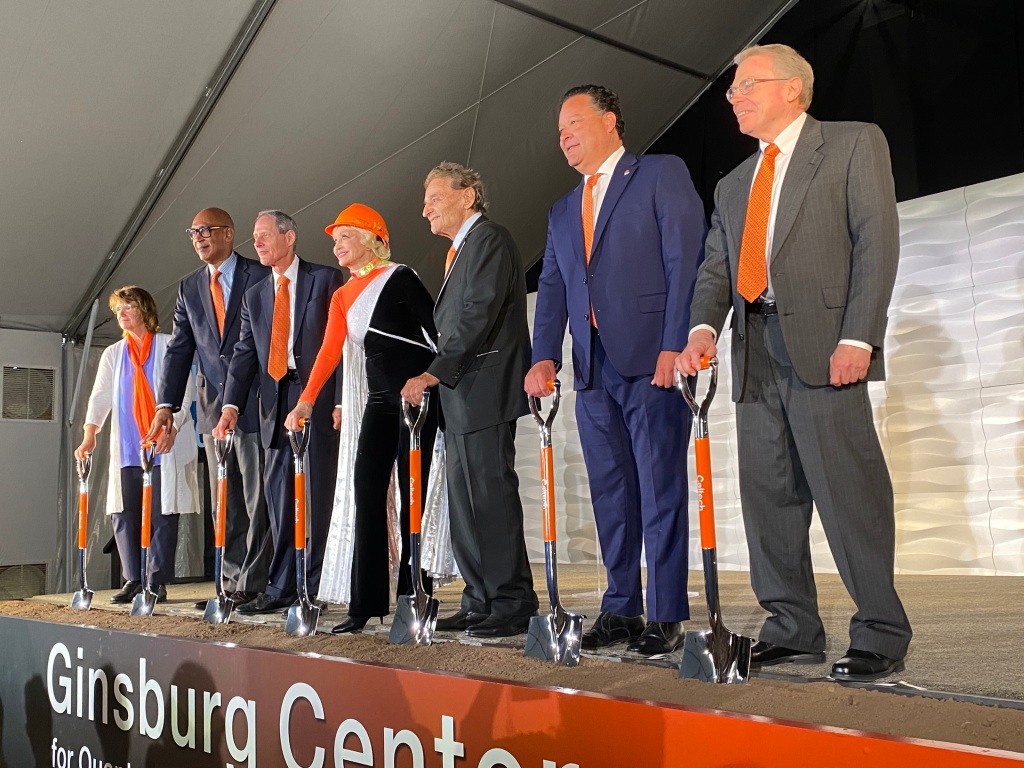Editor’s note: On 10 August 2023, Caltech celebrated the groundbreaking for the Dr. Allen and Charlotte Ginsburg Center for Quantum Precision Measurement, which will open in 2025. At a lunch following the ceremony, John Preskill made these remarks.

Hello everyone. I’m John Preskill, a professor of theoretical physics at Caltech, and I’m honored to have this opportunity to make some brief remarks on this exciting day.
In 2025, the Dr. Allen and Charlotte Ginsburg Center for Quantum Precision Measurement will open on the Caltech campus. That will certainly be a cause for celebration. Quite fittingly, in that same year, we’ll have something else to celebrate — the 100th anniversary of the formulation of quantum mechanics in 1925. In 1900, it had become clear that the physics of the 19th century had serious shortcomings that needed to be addressed, and for 25 years a great struggle unfolded to establish a firm foundation for the science of atoms, electrons, and light; the momentous achievements of 1925 brought that quest to a satisfying conclusion. No comparably revolutionary advance in fundamental science has occurred since then.
For 98 years now we’ve built on those achievements of 1925 to arrive at a comprehensive understanding of much of the physical world, from molecules to materials to atomic nuclei and exotic elementary particles, and much else besides. But a new revolution is in the offing. And the Ginsburg Center will arise at just the right time and at just the right place to drive that revolution forward.
Up until now, most of what we’ve learned about the quantum world has resulted from considering the behavior of individual particles. A single electron propagating as a wave through a crystal, unfazed by barriers that seem to stand in its way. Or a single photon, bouncing hundreds of times between mirrors positioned kilometers apart, dutifully tracking the response of those mirrors to gravitational waves from black holes that collided in a galaxy billions of light years away. Understanding that single-particle physics has enabled us to explore nature in unprecedented ways, and to build information technologies that have profoundly transformed our lives.

What’s happening now is that we’re getting increasingly adept at instructing particles to move in coordinated ways that can’t be accurately described in terms of the behavior of one particle at a time. The particles, as we like to say, can become entangled. Many particles, like electrons or photons or atoms, when highly entangled, exhibit an extraordinary complexity that we can’t capture with the most powerful of today’s supercomputers, or with our current theories of how Nature works. That opens extraordinary opportunities for new discoveries and new applications.
We’re very proud of the role Caltech has played in setting the stage for the next quantum revolution. Richard Feynman envisioning quantum computers that far surpass the computers we have today. Kip Thorne proposing ways to use entangled photons to perform extraordinarily precise measurements. Jeff Kimble envisioning and executing ingenious methods for entangling atoms and photons. Jim Eisenstein creating and studying extraordinary phenomena in a soup of entangled electrons. And much more besides. But far greater things are yet to come.
How can we learn to understand and exploit the behavior of many entangled particles that work together? For that, we’ll need many scientists and engineers who work together. I joined the Caltech faculty in August 1983, almost exactly 40 years ago. These have been 40 good years, but I’m having more fun now than ever before. My training was in elementary particle physics. But as our ability to manipulate the quantum world advances, I find that I have more and more in common with my colleagues from different specialties. To fully realize my own potential as a researcher and a teacher, I need to stay in touch with atomic physics, condensed matter physics, materials science, chemistry, gravitational wave physics, computer science, electrical engineering, and much else. Even more important, that kind of interdisciplinary community is vital for broadening the vision of the students and postdocs in our research groups.
Nurturing that community — that’s what the Ginsburg Center is all about. That’s what will happen there every day. That sense of a shared mission, enhanced by colocation, will enable the Ginsburg Center to lead the way as quantum science and technology becomes increasingly central to Caltech’s research agenda in the years ahead, and increasingly important for science and engineering around the globe. And I just can’t wait for 2025.
Caltech is very fortunate to have generous and visionary donors like the Ginsburgs and the Sherman Fairchild Foundation to help us realize our quantum dreams.

